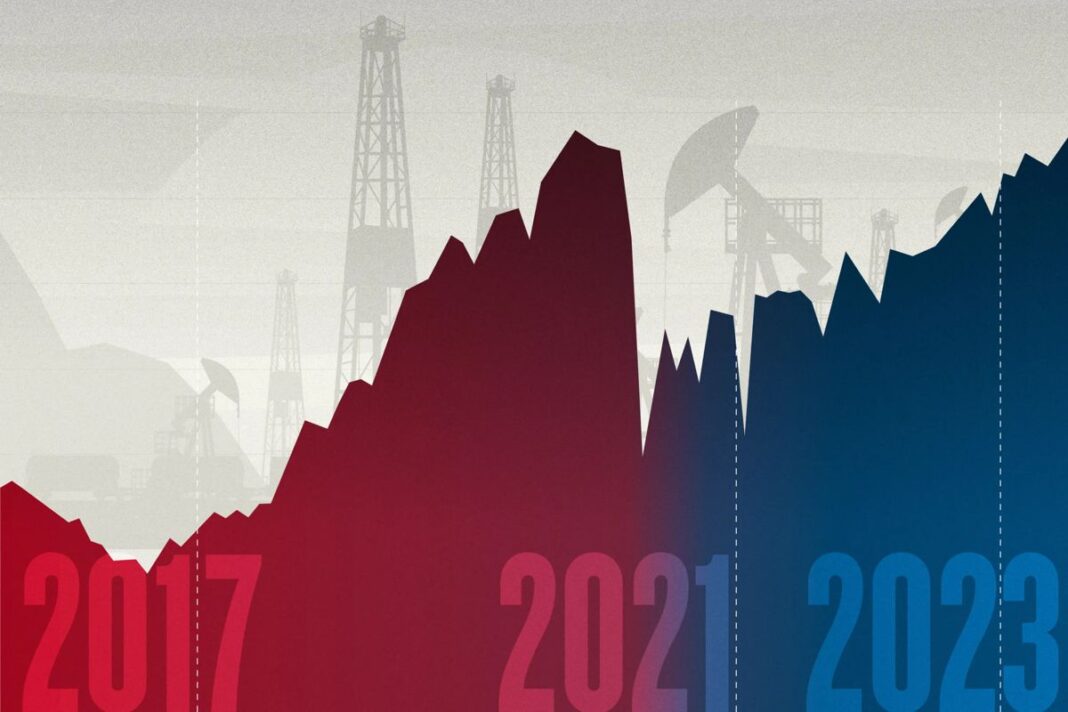The U.S. Energy Information Administration (EIA) is predicting that the United States is on track for record production of oil and gas in 2024, although some industry experts say there’s trouble brewing behind the scenes that could curtail supply in coming years.
The EIA stated in a Sept. 12 outlook that it expects U.S. crude oil production to rise to 12.8 million barrels per day (bpd) in 2023 and 13.1 million bpd in 2024 from an average of 11.9 million bpd in 2022. U.S. production of natural gas was similarly projected to rise to 103 billion cubic feet per day (cfd) in 2023 and 104 billion cfd in 2024 from 98 billion cfd in 2022.
That has led supporters of the Biden administration to applaud its industrial energy policies, with media outlet CNN proclaiming that “critics accuse President Joe Biden of waging a war on the oil industry … and yet, on his watch, U.S. oil production is poised to shatter all-time records set during the Trump administration.”
An administration that abruptly canceled pipelines and drilling leases and spent hundreds of billions of dollars to transition U.S. energy production toward wind, solar, and electric cars and away from fossil fuels has also succeeded in increasing oil production to new heights, they say.
However, behind the numbers are signs that U.S. fossil fuel production is atrophying, as regulatory hostility and pressure from climate activists are exacerbating the chronic boom and bust cycles of the oil and gas industry.
The Investment–Production Lag
“There are a lot of moving parts when it comes to the oil and gas industry,” Joe Trotter, director of the energy, environment, and agriculture task force at the American Legislative Exchange Council, told The Epoch Times. “It can take years for the effects of policies to be felt in oil production.
“What’s going on right now is that there is record production, but that’s because it takes two to four years from the initial leasing and initial permitting for companies to actually produce a viable commercial amount. So what you’re seeing now is the legacy of the Trump administration, but at the same time, you’re beginning to see some of the problems that are coming out of the Biden administration.”







